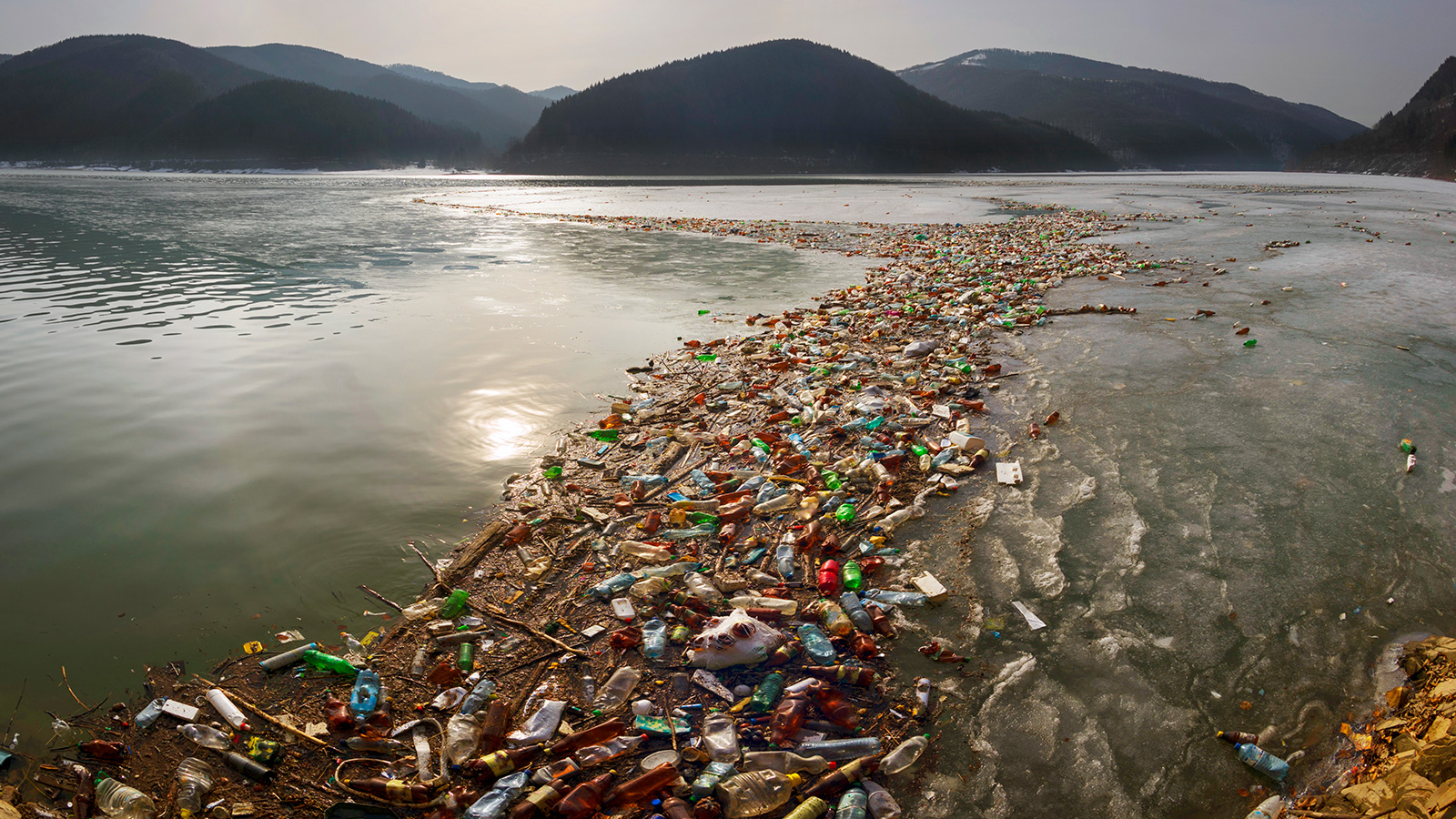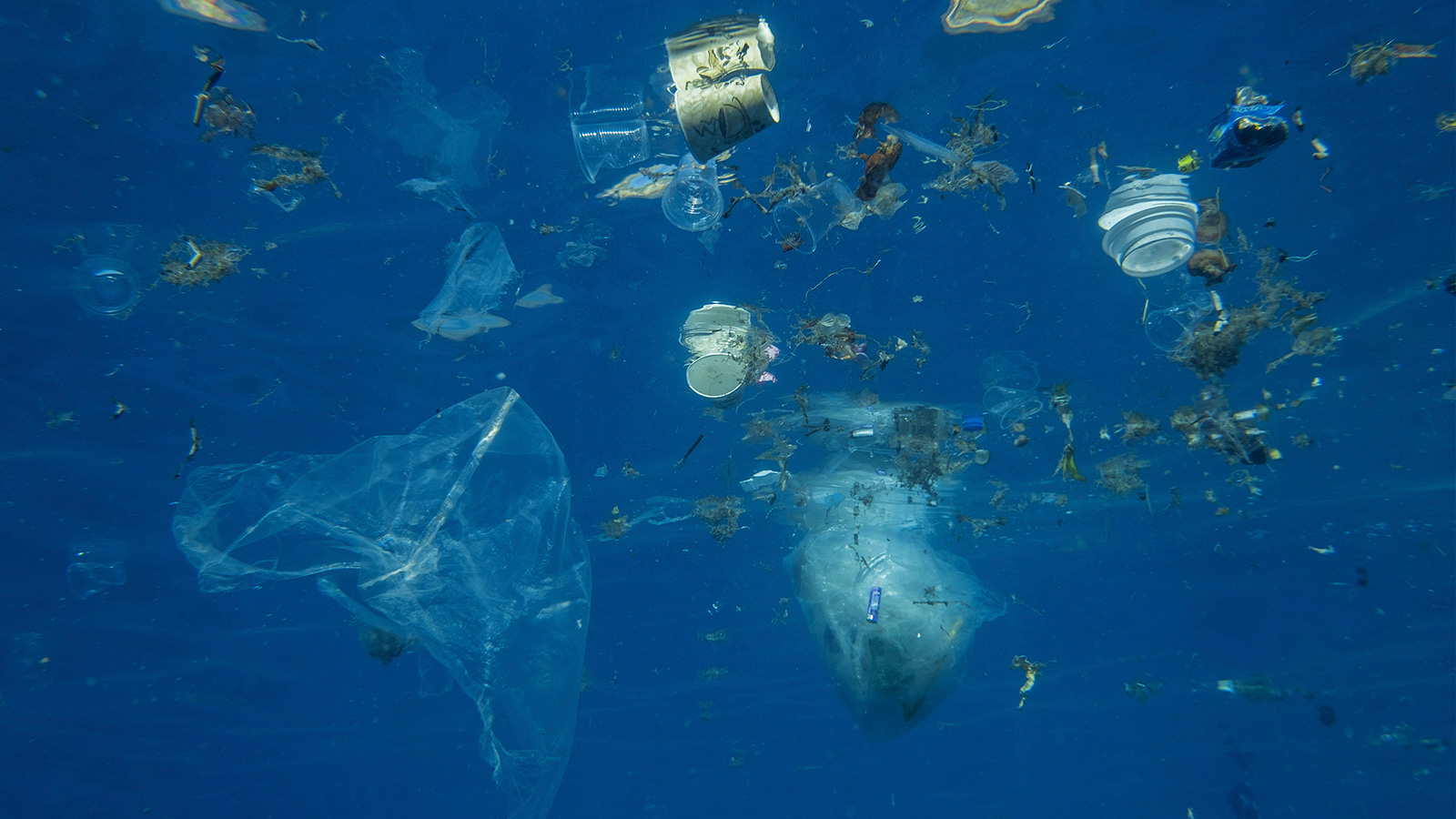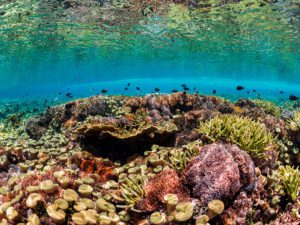Public awareness around the threat of plastic pollution has grown rapidly in recent years. However, until last year, government, industry, and civil society lacked an evidence-based roadmap that outlined a set of integrated solutions to stem the flow of plastic into the ocean at scale. The Pew Charitable Trusts and SYSTEMIQ produced Breaking the Plastic Wave as a first-of-its kind model of the global plastics system which identified actions that, taken, collectively, could reduce plastic inputs into the ocean by 80 percent by 2040. To learn more, Our Shared Seas checked in with Sarah Baulch, a senior associate at Pew and a co-author of the report.

Photo: panaramka / iStock
Plastic pollution has emerged in the past decade as one of the most visible and accelerating human impacts on the ocean. Since the publication of the Jambeck et al. seminal paper in Science in 2015, how has our scientific understanding of this problem, its causes, and its effects on the marine environment changed?
That 2015 paper provided some of the first estimates of plastic pollution flows from land to the ocean—and those numbers were a wakeup call to the global scale of the problem. Since then, we’ve gained further understanding of the negative impacts of plastic pollution on marine species, the health and economic impacts on humans, and how far reaching the problem is—from deep sea trenches to the poles. In 2020, further analysis by Law et al. highlighted that the United States generates the largest amount of plastic waste globally, and that its contribution to plastic pollution, both domestically and through the export of plastic waste, is also among the highest.
As a global analysis, The Pew Charitable Trusts, SYSTEMIQ, and several thought partners published Breaking the Plastic Wave in 2020, and an accompanying paper in Science, that looked at both future trajectories of plastic pollution and the impact of different potential solutions. We found that without action, plastic pollution flows to the ocean would triple to 29 million metric tons per year by 2040. However, there are viable solutions. By implementing a suite of actions—including reducing plastic production and consumption, designing products for recycling, expanding waste collection rates, increasing recycling, and reducing plastic waste exports—we can reduce projected plastic pollution flows into the ocean by 80 percent in 2040.
By implementing a suite of actions—including reducing plastic production and consumption, designing products for recycling, expanding waste collection rates, increasing recycling, and reducing plastic waste exports—we can reduce projected plastic pollution flows into the ocean by 80 percent in 2040.
How has the COVID-19 pandemic affected plastic pollution? Some studies seem to suggest that widespread use of items like PPE and disposal single-use plastics are increasing ocean plastic pollution. How are individuals, municipalities, and countries responding to this influx of waste? Are they using it to double down on existing efforts to reduce pollution, or are we seeing a regression?
Waste data covering the last year are only gradually becoming available, so it’s hard to get an accurate picture of the overall impact of the COVID-19 pandemic on plastic waste and pollution, but there are some things we know already. Oil prices have fallen, making virgin plastic even cheaper to produce. This is putting a greater strain on the profitability of the recycling industry and the competitiveness of other substitute materials. The rise in public use of PPE is necessary to keep people safe, but it has created a significant stream of biomedical plastic waste that is entering our environment. An estimated 3.4 billion face masks are thrown away each day. Additionally, demand for takeaway packaging has risen, some bans on single-use plastics were temporarily rolled back, and plastic production has continued to grow.
As we seek to build back better, it’s important that we seek to build a more resilient and sustainable economy that addresses global environmental challenges, such as climate change and plastic pollution, and protects human health. Ramping up efforts to reduce production and consumption of plastics will be a vital part of this.
As we seek to build back better, it’s important that we seek to build a more resilient and sustainable economy that addresses global environmental challenges, such as climate change and plastic pollution, and protects human health. Ramping up efforts to reduce production and consumption of plastics will be a vital part of this.
What will it take to implement the solutions offered in Breaking the Plastic Wave and what are current barriers to doing so? Where are you seeing signs of encouraging progress?
Our analysis showed that current commitments by industry and governments would reduce projected plastic pollution flows in 2040 by only 7 percent, which means we need a much greater level of action. By implementing coordinated, ambitious, yet feasible actions, stakeholders can reduce projected plastic pollution flows into the ocean by 80 percent over the next 20 years. This scenario is economically viable, but investment will need to shift away from production of virgin plastic toward more sustainable options, such as the establishment of refill systems, improvements in collection and recycling infrastructure, and phasing out of hard-to-recycle, avoidable single-use plastics. There are signs of progress as governments begin to take a more comprehensive policy approach and companies adopt virgin plastic reduction commitments. However, such actions will need to be considerably ramped up in the next decade to achieve the system changes needed to change the trajectory of plastic pollution.
There are signs of progress as governments begin to take a more comprehensive policy approach and companies adopt virgin plastic reduction commitments. However, such actions will need to be considerably ramped up in the next decade to achieve the system changes needed to change the trajectory of plastic pollution.

Photo: Andriy Nekrasov / iStock
What are your team’s recommendations for addressing plastic leakage into the ocean in areas where formal waste collection is not economically feasible?
The informal waste collection sector—which encompasses subsistence workers who collect, transport, and trade waste in most developing countries—plays a major role in preventing plastic pollution and increasing recycling rates. Our study found that they are responsible for around 60 percent of global plastic recycling. Efforts to address plastic leakage in areas where formal waste collection is absent will need to be multi-pronged. To minimize the pressure on already overburdened communities, governments and industry should prioritize reducing plastic use and waste, work to improve the working conditions for the waste collection sector, and increase funding for waste collection and recycling.
What are some ways to finance the development of new materials, collection infrastructure, and delivery models that do not yet exist and may be less mature or financially viable? Who would bear these costs and who would benefit?
Financing the changes needed will require substantial shifts in investment and incentives. For example, governments could channel subsidies for plastic production into economic incentives for new delivery models and reuse systems and other innovation. Extended producer responsibility policies—where producers are responsible for the costs of waste management—could provide both an incentive to reduce waste generation and sustainable funding to cover the costs of collection and recycling infrastructure.
Plastic pollution is also a climate issue. According to the Breaking the Plastic Wave report, plastic production under business-as-usual is incompatible with the goals of the Paris Agreement, but your team’s modeled scenario could create a 25 percent reduction in plastic-related GHG emissions in 2040. What are the most promising solutions for addressing the climate implications of plastics?
Our study found reducing plastic production—through elimination, the expansion of consumer reuse options, or new delivery models—provides the biggest opportunity to reduce greenhouse gas emissions. Complementary actions—such as design for recycling and boosting collection and recycling rates—is also needed to achieve the 80 percent reduction in projected plastic pollution flows by 2040. It will also be important to identify opportunities to scale reduction and reuse beyond the levels in our model and limit the expansion of carbon-intensive end-of-life technologies, such as incineration and chemical conversion.
Plastic pollution is often thought of as an ocean problem, but it also affects people’s lives at all stages of the process, from production and use to disposal. How do we ensure that work to reduce plastic pollution in the ocean does not exacerbate existing inequities—and ideally makes things better?
Consulting all stakeholders in policies aimed at addressing plastic pollution will help ensure a just transition that features actions that are holistic and help reduce health and climate impacts. For example, reducing plastic production will also reduce health impacts on communities near production sites and cut a major source of greenhouse gas emissions. And at the other end of the plastic life cycle, many countries are already taking action to restrict imports of plastic waste to minimize dumping and open burning and the associated impacts on local communities.
Consulting all stakeholders in policies aimed at addressing plastic pollution will help ensure a just transition that features actions that are holistic and help reduce health and climate impacts.



